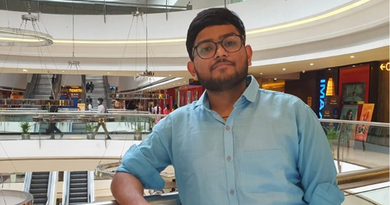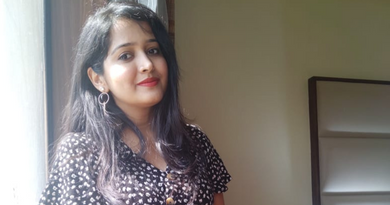Internship at Semi-Conductor Laboratory – Fabricating my career in VLSI
![]()
About the Author: Anshul Jain, a student of Birla Institute of Technology and Science, Pilani, gives detailed insights into his internship in the field of VLSI design.
“Experience without theory is blind, but theory without experience is mere intellectual play.” – Emmanuel Kant
Having studied subjects like electronic devices, digital design, microelectronic circuits, and microprocessors in my second year, I developed an interest in experiencing the fabrication of chips. My first stint with VLSI began when I got an internship at Semi-Conductor Laboratory (SCL), Department of Space, Government of India. I got this internship through Practice School-1 (PS-1), a program offered by BITS Pilani to its second year students. It is an exposure oriented program graded for five units as it is an integral part of the curriculum. PS-1 focuses on learning an organization’s structure and function, developing personality traits, and enhancing communication skills. The Practice School Division shares a list of 250 internship places for the students to choose their preferences. Students are allotted the internship center on the basis of their CGPA. I was interested in VLSI Design and filled my preference order after thorough research about the practice schools which suited my interests and experiences shared by various seniors. I got to intern with SCL, an organisation which is engaged in the research and development in the area of microelectronics and has developed a number of key VLSICs, a majority of which are Application Specific Integrated Circuits (ASICs) for high-reliability applications in industrial, defense, and space sectors, under this program.
On the first day of the internship, six of us arrived at the laboratory and waited eagerly to get in. We submitted all the electronic items at the entrance and walked inside. The HR introduced us to the head of Project Planning Group(PPG), an alumnus of BITS Pilani. We were then asked to fill forms related to Id cards and project registration and were allotted a project. Being students of electronics and instrumentation discipline, we were allotted a project in Electrical Controls Division. However, I was deeply interested in VLSI design and fabrication and requested the HR to assign us a project in Fabrication Division. Unfortunately, that division was only given to Master’s students, so we had to settle with VLSI Testing Division (VTD). We met the head of VTD, Mr. Gurvinder Singh, and two other employees. There was a small technical interview where the head asked us a few questions related to microprocessors and microelectronic circuits. After the interview was over, we got to know that Mr. Sachin Sharma, one of the interviewers, would be our mentor, and we were assigned a project titled Development of USB Interfacing using PIC Microcontroller for Data Acquisition. Subsequently, we were taken for a tour of VLSI Testing Division. There was a conference room, staff room, Printed Circuit Board (PCB) room, and a huge VLSI testing area. He asked us to wear a coat before entering the testing area. We then entered into a chamber where we were blasted with high-speed air from all directions. This was done so as to remove any dust particles on the coat. We entered the testing area known as ‘clean room‘ having a class of 10,000 (a parameter used to measure the number of dust particles per cubic foot of air) and found a lot of machines placed in a sequential manner including two huge testers, a temperature-pressure calibrator, and many PCs.
As a part of my project, I needed to study about the working and functioning of USB module associated with the PIC18F67J50 microcontroller. Also, significant understanding of USB operation, data packet handling, and interrupt handling was required. A part of my project was already done by my college seniors, so I needed to first study their work and then complete the project. Starting with the study of data-sheet of PIC18F67J50 microcontroller, I studied different processes including USB protocol, different types of descriptors, oscillator settings, and enumeration process. Side-by-side, I wrote codes in C programming language so as to implement the knowledge gained through the studies. I was working along with learned and friendly technicians and scientists who helped me at every stage of my project. Since I had gotten the internship as a part of my college curriculum, there was a regular evaluation through quizzes, group discussions, and presentations for which an instructor from our college used to visit frequently. So, I was responsible for coordinating and taking permission from various divisions for these evaluations at SCL.
As our project advanced, I started developing an interest in SCL’s work culture. There were lots of presentations and demonstrations from students, employees, and people from other companies who came from India as well as abroad to market their products.The dedication with which people worked at SCL motivated me a lot. We were also given a tour of VLSI fabrication lab where all the ASICs and Micro Electro Mechanical Systems (MEMS) were fabricated. The main fabrication area was a clean room of class 10 which meant that there were less than 10 dust particles per cubic foot of air. So, we had to wear special shoes, coats, and masks before entering the area as even a single dust particle could produce an error in the chip.
Now, coming to the most exciting part of my internship – trips. In my internship of 8 weeks, we went to Kasauli, Amritsar, and New Delhi and explored Chandigarh. The most impressive feature of SCL was the cordiality of the employees, and I learnt many concepts by interacting with them. They even organized trips for us. One of the employees arranged a cab to Kasauli for us in a cheaper fare while another made a very informative map of the Golden Temple area and listed out the must-visit places in Amritsar just before our trip.
As the last week of my internship neared, I focused more on developing reports and preparing for the final presentation. The thought of leaving that incredible organization made me sad. After the project, I had a deep knowledge of the USB protocol and was able to troubleshoot the problems related to USB devices on my system. Also, I gained significant understanding of the application of microcontrollers and their various features. I developed a good command over these electrical devices like oscilloscopes, power supplies, multimeter, signal generator, etc. as I used them regularly in my project. I have become proficient in C programming as I had to write a code for every operation like initialization, interrupts, oscillators, and descriptors. Not only that, socializing with the employees at SCL helped me improve my communication and social skills. Those 8 weeks helped me gain a lot of information about the working of industries and the work culture which ultimately helped me in shaping my personality. The experience I had there will be imprinted in my mind forever.
Do you also want to work in the field of chip fabrication? Check out these electronics engineering internships and develop your skills.
Editor’s note – If you also have an interesting story to share, you can now participate in Your Internship Story Contest 2017 and win cash prizes and goodies worth INR 1 Lac!



